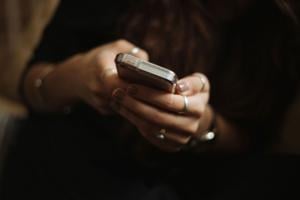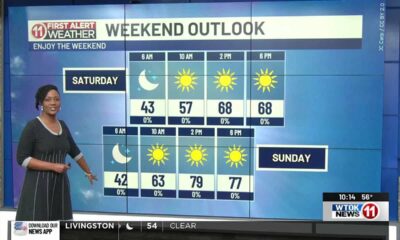Deciding where to go college is the first major life decision many Americans make. And while there are many factors to weigh when selecting a school – including cost and distance from home – many of the 16.6 million American college students today chose to enroll in the best school they could get into.
It is generally believed that graduates of elite colleges and universities are better positioned for higher-paying careers later in life. And there is plenty of evidence to back this claim. According to one study conducted between 1996 and 2014, about 38% of Fortune 500 CEOs and 45% of billionaires attended elite post-secondary schools. (This is where the 25 richest American billionaires went to college.)
Because elite colleges and universities offer high quality and rigorous academic programs, they receive far more applications each year than they can accept. As a result, many of the best schools in the country are also the most selective. It is worth noting that those who graduate from top-tier institutions are high achievers to begin with, and therefore, any career success cannot be attributed to their college education alone.
Based on data from the U.S. Department of Education, of the seven colleges or universities in Mississippi with available data, Mississippi College, located in Clinton, ranks as the hardest school to get into. Only 49.0% of applicants for the fall 2021 semester were admitted, and the median SAT score among enrolled students in the 2020-2021 academic year was 1200 out of a possible 1600.
The average cost of attending Mississippi College as a full-time student is $34,918 for one academic year. Average annual cost of attendance is only for full-time, first-time, undergraduates who receive Title IV aid.
All schools within each state with at least 1,000 applicants in fall 2021 were ranked based on an index score of median SAT scores, from the U.S. Department of Education’s College Scorecard and admissions rates, from the National Center for Education Statistics. Average annual cost of attendance is also from the College Scorecard.
| State | Hardest school to get into | Admissions rate, Fall 2021 (%) | Combined median SAT scores (out of 1600) | Avg. annual cost of attendance ($) | Schools considered in state |
|---|---|---|---|---|---|
| Alabama | Tuskegee University | 34.2 | 953 | 40,750 | 17 |
| Alaska | University of Alaska Fairbanks | 64.7 | 1160 | 19,135 | 1 |
| Arizona | Ottawa University-Surprise | 30.5 | 981 | 45,139 | 5 |
| Arkansas | Lyon College | 27.2 | 1091 | 41,396 | 12 |
| California | California Institute of Technology | 3.9 | 1555 | 74,763 | 53 |
| Colorado | United States Air Force Academy | 12.4 | 1325 | N/A | 13 |
| Connecticut | Yale University | 5.3 | 1520 | 76,645 | 14 |
| Delaware | University of Delaware | 72.3 | 1240 | 28,708 | 2 |
| Florida | University of Florida | 30.1 | 1375 | 21,151 | 27 |
| Georgia | Emory University | 13.1 | 1455 | 72,604 | 29 |
| Hawaii | University of Hawaii at Manoa | 70.0 | 1175 | 23,405 | 5 |
| Idaho | The College of Idaho | 56.3 | 1145 | 45,607 | 6 |
| Illinois | University of Chicago | 6.5 | 1535 | 81,531 | 39 |
| Indiana | University of Notre Dame | 15.1 | 1475 | 74,172 | 27 |
| Iowa | Grinnell College | 10.5 | 1446 | 70,346 | 20 |
| Kansas | Sterling College | 47.4 | 990 | 40,406 | 9 |
| Kentucky | Berea College | 33.0 | 1180 | 54,866 | 18 |
| Louisiana | Tulane University of Louisiana | 9.6 | 1420 | 75,628 | 15 |
| Maine | Colby College | 8.9 | 1450 | 73,600 | 5 |
| Maryland | Johns Hopkins University | 7.5 | 1515 | 74,001 | 12 |
| Massachusetts | Massachusetts Institute of Technology | 4.1 | 1545 | 73,160 | 37 |
| Michigan | University of Michigan-Ann Arbor | 20.2 | 1430 | 30,926 | 25 |
| Minnesota | Carleton College | 17.5 | 1425 | 74,275 | 19 |
| Mississippi | Mississippi College | 49.0 | 1200 | 34,918 | 8 |
| Missouri | Washington University in St. Louis | 13.0 | 1520 | 76,910 | 20 |
| Montana | The University of Montana-Western | 33.3 | 1005 | 17,790 | 6 |
| Nebraska | University of Nebraska-Lincoln | 81.1 | 1215 | 24,400 | 6 |
| Nevada | University of Nevada-Las Vegas | 83.5 | 1140 | 18,756 | 2 |
| New Hampshire | Dartmouth College | 6.2 | 1500 | 77,152 | 3 |
| New Jersey | Princeton University | 4.4 | 1510 | 74,150 | 19 |
| New Mexico | Eastern New Mexico University-Main Campus | 32.5 | 1055 | 17,897 | 4 |
| New York | Columbia University in the City of New York | 4.1 | 1515 | 79,750 | 81 |
| North Carolina | Duke University | 5.9 | 1520 | 77,846 | 41 |
| North Dakota | University of Mary | 78.8 | 1110 | 30,194 | 4 |
| Ohio | Case Western Reserve University | 30.2 | 1430 | 69,526 | 38 |
| Oklahoma | Oklahoma Baptist University | 55.7 | 1105 | 42,983 | 11 |
| Oregon | Corban University | 37.5 | 1080 | 45,919 | 13 |
| Pennsylvania | University of Pennsylvania | 5.9 | 1515 | 78,186 | 61 |
| Rhode Island | Brown University | 5.5 | 1500 | 77,490 | 6 |
| South Carolina | Clemson University | 49.2 | 1300 | 32,254 | 22 |
| South Dakota | Augustana University | 71.8 | 1223 | 47,710 | 7 |
| Tennessee | Vanderbilt University | 7.1 | 1520 | 73,148 | 23 |
| Texas | Rice University | 9.5 | 1515 | 67,102 | 54 |
| Utah | Brigham Young University | 59.2 | 1305 | 18,936 | 5 |
| Vermont | Middlebury College | 13.4 | 1430 | 74,248 | 3 |
| Virginia | Washington and Lee University | 18.8 | 1425 | 73,900 | 33 |
| Washington | University of Washington-Seattle Campus | 53.5 | 1327 | 26,825 | 14 |
| West Virginia | University of Charleston | 69.7 | 1073 | 43,829 | 12 |
| Wisconsin | University of Wisconsin-Madison | 60.4 | 1360 | 26,393 | 13 |
| Wyoming | University of Wyoming | 96.8 | 1140 | 20,258 | 1 |





















































